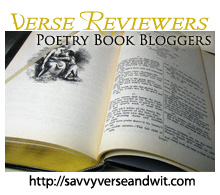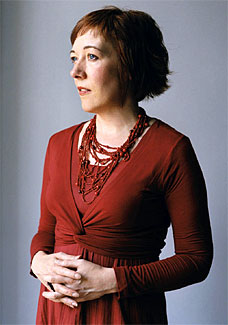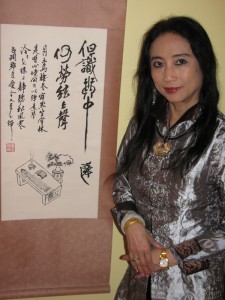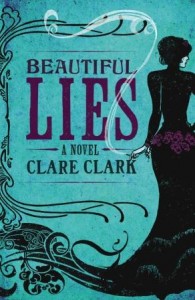
The meme allows bloggers to share what books they receive in the mail or through other means over the past week.
Just be warned that these posts can increase your TBR piles and wish lists.
Here’s what I received:
1. The Lost Art of Mixing and The School of Essential Ingredients by Erica Bauermeister for TLC Book Tour.
Lillian and her restaurant have a way of drawing people together. There’s Al, the accountant who finds meaning in numbers and ritual; Chloe, a budding chef who hasn’t learned to trust after heartbreak; Finnegan, quiet and steady as a tree, who can disappear into the background despite his massive height; Louise, Al’s wife, whose anger simmers just below the boiling point; and Isabelle, whose memories are slowly slipping from her grasp. And there’s Lillian herself, whose life has taken a turn she didn’t expect. . . .
Their lives collide and mix with those around them, sometimes joining in effortless connections, at other times sifting together and separating again, creating a family that is chosen, not given. A beautifully imagined novel about the ties that bind—and links that break—The Lost Art of Mixing is a captivating meditation on the power of love, food, and companionship.
2. The Hopkins Touch by David Roll for review in January from LibraryThing’s Early Reviewer Program.
David Roll shows how Harry Hopkins, an Iowa-born social worker who had been an integral part of the New Deal’s implementation, became the linchpin in FDR’s–and America’s–relationships with Churchill and Stalin, and spoke with an authority second only to the president’s. Gaunt, nearly spectral, and malnourished following an operation to remove part of his stomach, the newly widowed Hopkins accepted the president’s invitation to move into the White House in 1940 and remained Roosevelt’s closest advisor, speechwriter, sounding board, and friend nearly to the end. Between 1940 and 1945, with incomparable skill and indefatigable determination, Hopkins organized the Lend-Lease program and steered the president to prepare the public for war with Germany. He became FDR’s problem-solver and fixer, helping to smooth over crises, such as when the British refused to allow an invasion of Europe in 1943, enraging Stalin, who felt that the Soviet Union was carrying the military effort against the Nazis. Lacking an official title or a clear executive branch portfolio, Hopkins could take the political risks his boss could not, and proved crucial to maintaining personal relations among the Big Three. Beloved by some–such as Churchill, who believed that Hopkins “always went to the root of the matter”–and trusted by most–including the paranoid Stalin–there were nevertheless those who resented the influence of “the White House Rasputin.”
3. Ardor: Poems of Life by Janine Canan for review.
4. Carnival by Jason Bredle for review.
Jason Bredle’s poems approach the world like a haunted cat approaches a glacier, curious and itchy with strangeness. In Carnival, he skates paratactically between states of being: levity, heart-holes, licks of darkness, lovesickness and werewolfishness. Bredle’s gift as a poet is to traverse and re-traverse one looking glass in ten different moods. When he goes through it, we are taken. -Melissa Broder
5. Leaves by Michael Baron for review with Providence Book Promotions in February.
Welcome to Oldham, CT, a small town rich in Colonial heritage while being utterly contemporary. Situated along the Connecticut River Valley, Oldham bursts with color every fall, as the leaves on its trees evolve into an unmatched palette of scarlet, orange, purple, yellow, and bronze. For more than three decades, the Gold family has been a central part of Oldham in the fall, its Sugar Maple Inn a destination for “leaf-peepers” from all over the country, and its annual Halloween party a stirring way to punctuate the town’s most active month.
But this year, more than just the leaves are changing. With the death of their parents, the Gold siblings, Maria, Maxwell, Deborah, Corrina, and Tyler, have decided to sell the Sugar Maple Inn, and this year’s Halloween party will be the last. As October begins, the Golds contend with the finality that faces them, and the implications it has for a family that has always been so close. For some, it means embracing new challenges and new love. For others, it means taking on unimagined roles. And for others, it means considering the inconceivable. Complicating it all is a series of “hauntings” that touch each of the Gold siblings, a series of benign interventions that will remain a mystery until October draws to a close.
What did you receive?









 About the Author:
About the Author:

 About the Author:
About the Author:


 In addition to our book club meeting at the store, we’ll be attending a reading and discussion from two great translators, one of whom I consider a friend, and a poet whose work was translated. If you are in the Clarksburg, Md., area, please stop by Novel Places to interact with Danish Poet Carsten Rene Nielsen and his translator David Keplinger as they talk about their work on House Inspections.
In addition to our book club meeting at the store, we’ll be attending a reading and discussion from two great translators, one of whom I consider a friend, and a poet whose work was translated. If you are in the Clarksburg, Md., area, please stop by Novel Places to interact with Danish Poet Carsten Rene Nielsen and his translator David Keplinger as they talk about their work on House Inspections.





